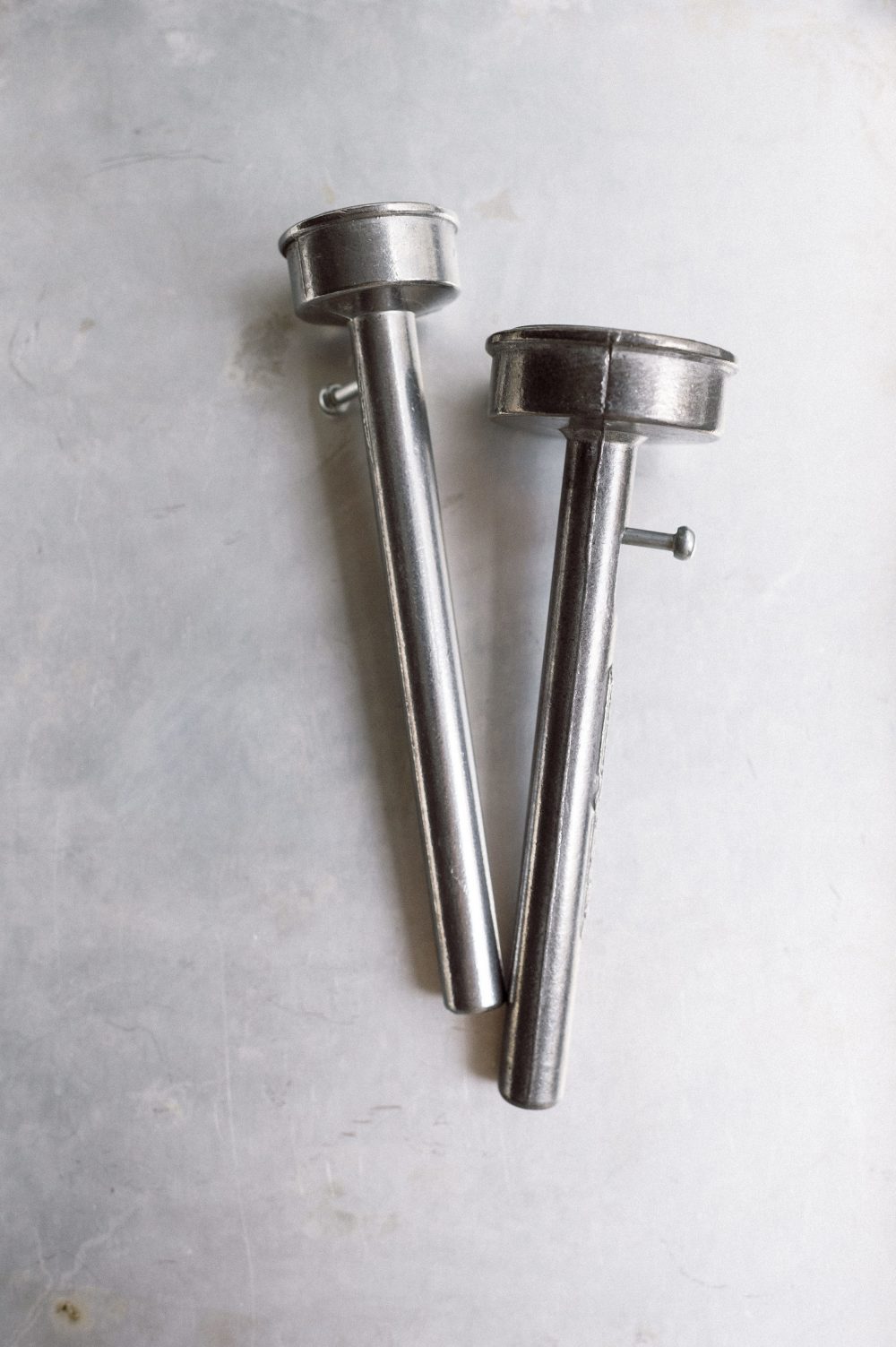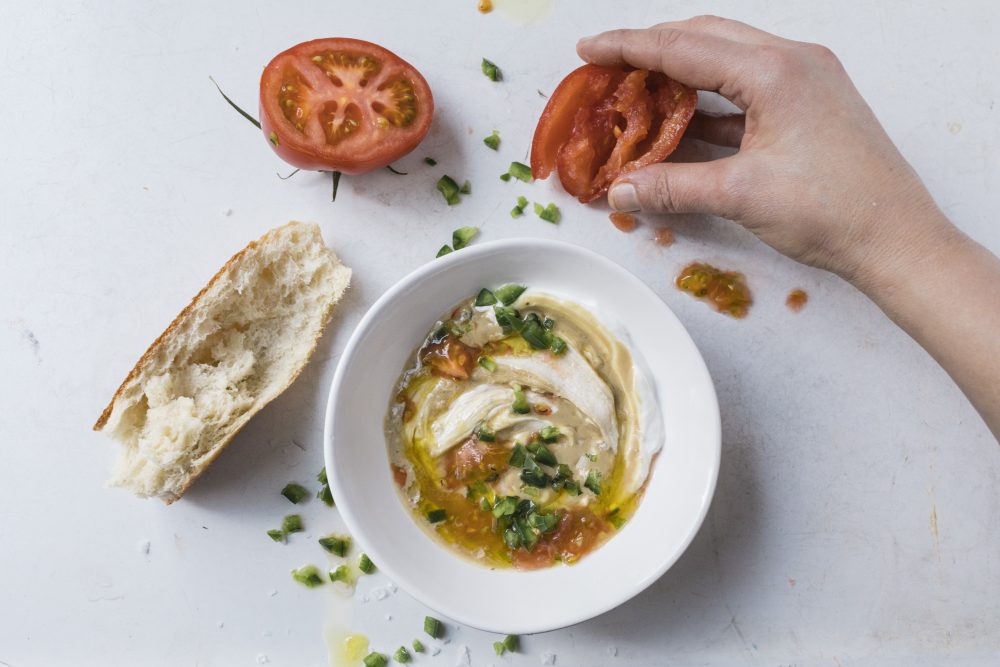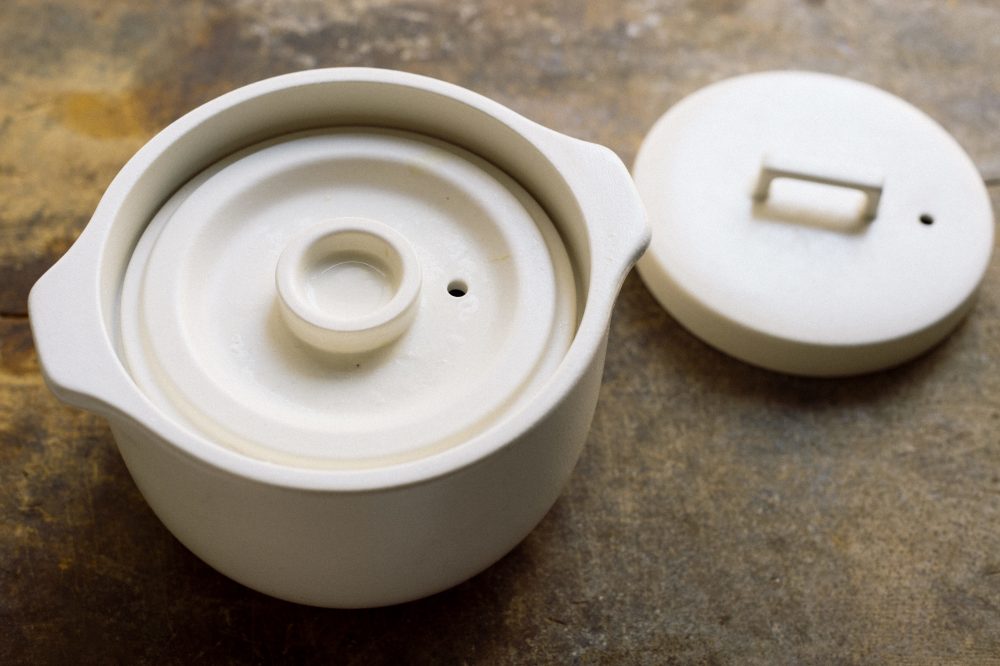
Easier Cookies via Falafel?
Freshly fried falafel—crisp-tender, drizzled with tahini and jammed into warm, fresh pita bread—are a given at the food and spice markets of Tel Aviv, where throngs of shoppers are bathed in a cacophonous blend of aromas: curry, fruit, breads and sweets. But how do the people staffing those stalls crank out those chickpea patties so consistently and speedily? They use a falafel scoop, a wand-style device with a spring-loaded cup at one end. A lever on the handle pulls back the bottom of the cup so the falafel mixture can be scooped into it. Release the lever and the mixture pops out into the hot oil for frying. We loved the ease and simplicity of the device, and found it also worked well to shape drop-style cookie dough. Stickier cookie dough didn’t pop out as easily as falafel, but we didn’t mind. Use a butter knife to smear the cookie dough into the cup, then release the lever and use the knife to slide off a perfectly shaped, evenly sized cookie every time. Various sizes (a 4-centimeter model we tested held 1 tablespoon, and a 3-centimeter held ½ table- spoon) are available on Amazon for $7 to $12.
A Fresh Dunk for Bread
At Abraxas North, the flagship Tel Aviv restaurant of Israeli chef Eyal Shani, we loved the menu of conspicuously simple food that changes daily—whole heads of cauliflower poached, then oiled, roasted, salted and served on a sheet of coarse brown parchment, for example. Or a duo of starters—sweet crème fraîche drizzled with olive oil, minced green chilies and a squeeze of tomato, and savory tahini with still more chilies and oil—paired with a slab of sourdough bread. The combination was transformative, particularly when we tore a hunk of bread and dunked it first in one, then the other. Back at Milk Street, we switched the crème fraîche to whole-milk Greek yogurt and turned the two dishes into one, swirling them together. Spoon ½ cup of yogurt into one side of a shallow serving bowl and ½ cup tahini into the other side. Gently swirl the two, then top with a sprinkle of coarse salt, a bit of minced jalapeno and a drizzle of olive oil. Finish by cutting a tomato in half and squeezing the juice and seeds of the one half over it. Serve with warm bread and the remaining tomato, cut into wedges.

A Tart Thai Ingredient
Tamarind is an intensely tart fruit used as a souring agent throughout Latin America and Southeast Asia. While some grocery stores sell fresh tamarind, which looks like a long brown, leathery seed pod, it is widely available as a jarred concentrate or in semi-dried blocks of tamarind pulp. We prefer the latter for its cleaner, stronger flavor. We use the tangy, earthy pulp in a dipping sauce for our Chiang Mai chicken from Thailand, but its juice is excellent for tarting up sauces, dressings and even cocktails—splash it in a gin and tonic or add it to a whiskey sour, as Portland, Oregon’s Pok Pok does. To use the dark, sticky pulp’s juice, cut off a chunk and soak it in hot water until it softens, about 10 minutes. Use your fingers to loosen and discard any large seeds, then force the pulp through a fine-mesh strainer.
Citrus, Without the Fruit
When we want to add a sour note to a dish without a splash of liquid, we reach for sumac. The ancient brick-red spice from the Middle East is made from acidic, berry-sized fruits that have been dried and powdered. (Although they’re related, this is not the poison sumac you’ve been warned to stay away from in the wild.) We use it in our tabbouleh to add a fruity, lemony quality as well as a flash of color. We also dust it over deviled eggs, yogurt dip, even toasted cheese sandwiches. Look for sumac in local spice shops and Middle Eastern markets, or online at Penzey’s, which sells 2.5 ounces for $8.

Cooking Better Rice in Ceramic
In Japan, a traditional ceramic pot called a donabe is used as an all-purpose cooker both in the oven and on a gas stovetop (not electric or induction). One variation—the donabe rice cooker—has two lids, an inner with two vent holes and an outer with one. In most cases, rice is rinsed, sometimes soaked, then combined with a bit less water than normal (1 cup of rice to 200 milliliters water, just under a cup) and set over medium until steam appears. It then is cooked for a minute before being reduced to low for another six to eight minutes. Another 10 to 15 minutes off heat and the rice is done. We tested the 1.2-liter Kakomi Rice Cooker ($79 at Skordo.com) against a conventional electric model, and the Kakomi rice was hands-down better. It was fluffier and slightly stickier, with a light, toothsome texture. We also found that ceramic rice cookers are excellent for holding cooked rice for a long time before serving.
A Well-Spiced Sip of Coffee
The first time we tasted Arabic coffee, we were struck by the deliciously different drink, which was warmly seasoned and pleasantly sweet. The key ingredient? Cardamom, which coffee roasters across the Arabic world grind into their coffee beans. The blend is traditionally boiled and served after a meal in small cups, unfiltered and black, espresso-style. We recreated the same hint of spice by brewing the blend in our standard drip coffee maker. We particularly liked it with a bit of sugar and milk. The coffee is available online, but it’s easy to make in your own coffee grinder. Combine 1 tablespoon of whole green cardamom pods and 1 cup of coffee beans, then grind to desired coarseness and brew.
Last fall I got a new kitchen range. I really loved it—until Christmas Eve. A leg of lamb had been roasting for two hours in a Dutch oven at 300ºF. Suddenly, the oven door flew open with a bang and a huge fireball. It went out right away and nobody got hurt. A technician came to look at the oven and said lamb is known for releasing gases and exploding every now and then. Have you ever heard of this? — Elke Hagge, Hazelhurst, Wisconsin
The idea that a roasting leg of lamb could produce flammable gasses seemed, well, preposterous. Until we Googled “exploding leg of lamb” and found a similar story by Nigella Lawson. She credited the experience to a faulty cooker. So we dug deeper and spoke to Ms. Hagge, who said she cooked the lamb using a full bottle of red wine. At first, we didn’t think that was significant. Since most wine is roughly 12 percent alcohol, combustion seemed unlikely. But we dug deeper and realized that alcohol boils at a lower temperature than water (173ºF versus 212ºF). Things were starting to make sense. As Ms. Hagge’s lamb roasted, alcohol vapors slowly escaped the Dutch oven, rising to the top of the oven. Since ovens cycle off and on, once the alcohol vapors reached a sufficient concentration, they easily ignited the next time the heating element came on. To avoid this, start the dish on the stovetop at a very low simmer, reducing the wine by about three-quarters. This should allow the alcohol to mostly cook off (you likely will need to replace the liquid with water or stock before moving the pot into the oven).



